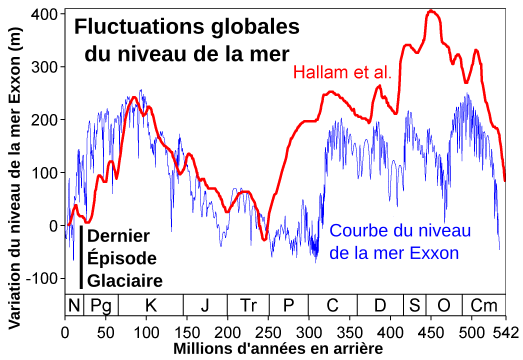File:Phanerozoic Sea Level-fr.svg
Appearance

Size of this PNG preview of this SVG file: 523 × 360 pixels. Other resolutions: 320 × 220 pixels | 640 × 441 pixels | 1,024 × 705 pixels | 1,280 × 881 pixels | 2,560 × 1,762 pixels.
Original file (SVG file, nominally 523 × 360 pixels, file size: 24 KB)
File history
Click on a date/time to view the file as it appeared at that time.
| Date/Time | Thumbnail | Dimensions | User | Comment | |
|---|---|---|---|---|---|
| current | 13:55, 1 November 2007 |  | 523 × 360 (24 KB) | Emmanuel.boutet | |
| 13:54, 1 November 2007 |  | 523 × 360 (24 KB) | Emmanuel.boutet | {{Information |Description= {{en|This figure compares the Hallam et al. (1983) and Exxon eustatic (global) en:sea level reconstructions for the en:Phanerozoic eon. The Exxon curve [http://hydro.geosc.psu.edu/ |
File usage
The following page uses this file:
Global file usage
The following other wikis use this file:
- Usage on es.wikipedia.org
- Usage on fr.wikipedia.org

